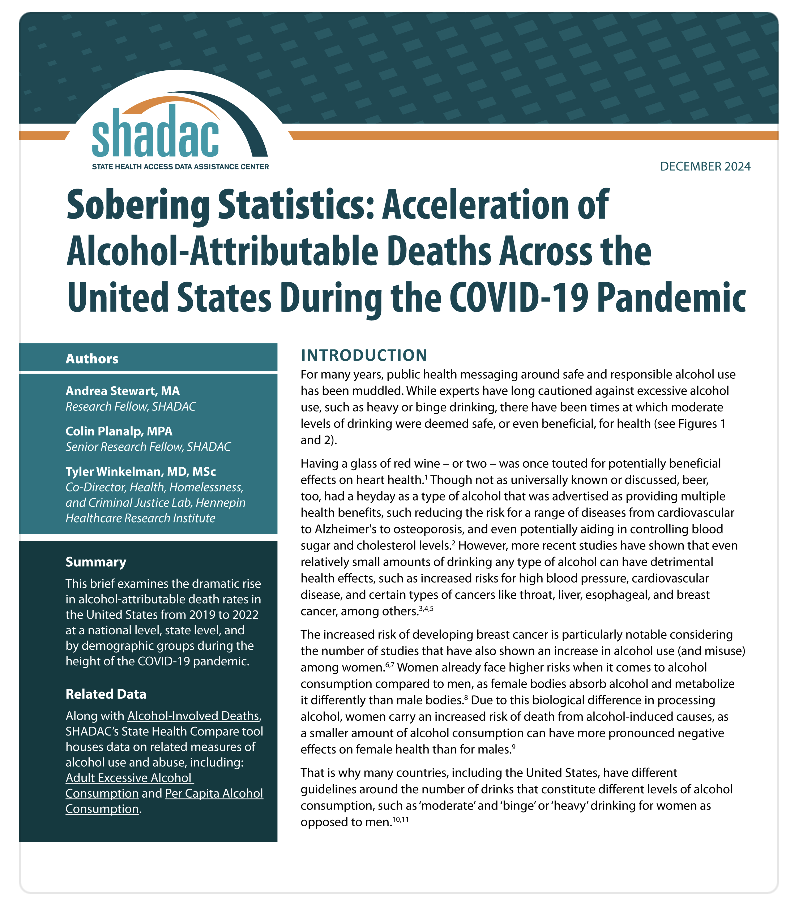Alcohol-involved deaths per 100,000 people
Measure Overview
State Health Compare provides annual, state-level rates of alcohol-related deaths per 100,000 people based on data from the Center for Disease Control and Prevention (CDC) WONDER Database. Estimates reflect deaths from various alcohol-induced causes, such as alcoholic gastritis, alcoholic liver disease, degeneration of the nervous system due to alcohol, and accidental poisoning by and exposure to alcohol.
Generate customized graphics using this data by selecting one of the options below.
Related Products

Sobering Statistics: Acceleration of Alcohol-Attributable Deaths Across the United States During the COVID-19 Pandemic
While alcohol-attributable death rates for years prior to 2006 remained generally stable, rates began steadily rising from 2006 onward, growing by nearly 30% from 7.4 alcohol-attributable deaths per 100,000 people to 10.4 per 100,000 people just prior to the COVID-19 pandemic in 2019. During the pandemic, this rate grew again by 30% from 10.4 deaths per 100,000 people to 13.5 death per 100,000 in 2022 in just three years – a worrying acceleration.
Adult Excessive Alcohol Consumption Rate Trends in the United States
To understand the current trends of excessive alcohol consumption at the national and state-levels in the United States, we used SHADAC’s State Health Compare tool to analyze data on the measure, “Percent of Adults Reporting Excessive Alcohol Consumption in the Past 30 Days”. Read this blog to learn more about these general trends, along with drinking trends amongst various subpopulations.
